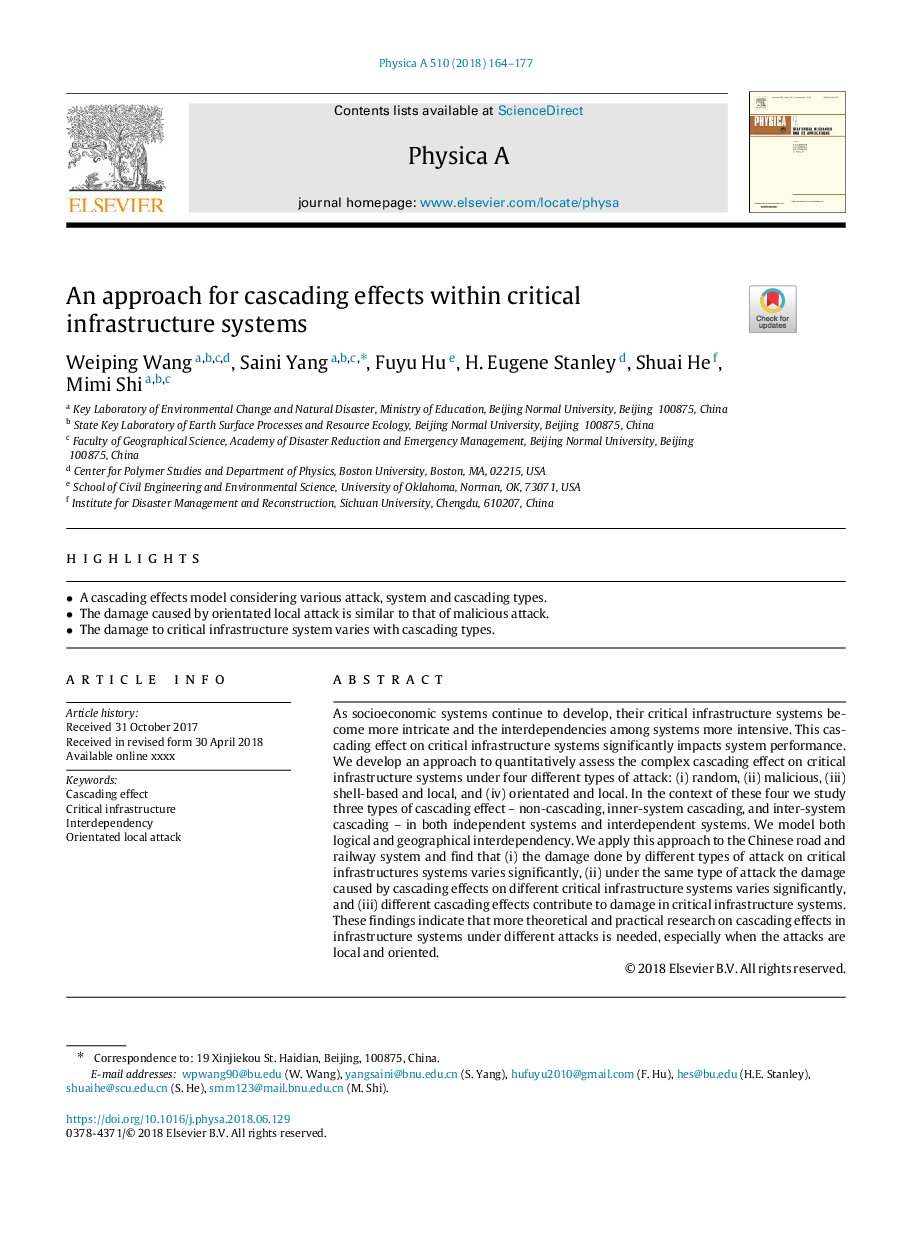| Article ID | Journal | Published Year | Pages | File Type |
|---|---|---|---|---|
| 7374841 | Physica A: Statistical Mechanics and its Applications | 2018 | 14 Pages |
Abstract
As socioeconomic systems continue to develop, their critical infrastructure systems become more intricate and the interdependencies among systems more intensive. This cascading effect on critical infrastructure systems significantly impacts system performance. We develop an approach to quantitatively assess the complex cascading effect on critical infrastructure systems under four different types of attack: (i) random, (ii) malicious, (iii) shell-based and local, and (iv) orientated and local. In the context of these four we study three types of cascading effect - non-cascading, inner-system cascading, and inter-system cascading - in both independent systems and interdependent systems. We model both logical and geographical interdependency. We apply this approach to the Chinese road and railway system and find that (i) the damage done by different types of attack on critical infrastructures systems varies significantly, (ii) under the same type of attack the damage caused by cascading effects on different critical infrastructure systems varies significantly, and (iii) different cascading effects contribute to damage in critical infrastructure systems. These findings indicate that more theoretical and practical research on cascading effects in infrastructure systems under different attacks is needed, especially when the attacks are local and oriented.
Related Topics
Physical Sciences and Engineering
Mathematics
Mathematical Physics
Authors
Weiping Wang, Saini Yang, Fuyu Hu, H. Eugene Stanley, Shuai He, Mimi Shi,
